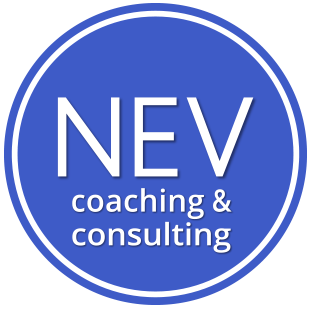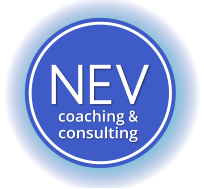 Self-leadership. Have you ever wondered what your Life would be like if you could FINALLY resolve, improve, advance, and fulfil the things within your control that still plague you?
Self-leadership. Have you ever wondered what your Life would be like if you could FINALLY resolve, improve, advance, and fulfil the things within your control that still plague you?
We all do. I believe that this is the core of the human experience. And if you reach into the spiritual, the very objective of our soul’s journey on this earth, in this lifetime.
Sounds big no? It is, and yet the very nature of such challenges is that they are…challenges. If they were easy, they wouldn’t be meaningful, impactful and so very important towards achieving the ease, peace, joy and success we so long for.
But they also don’t have to be SO HEAVY…
Many of us get stuck in what we STILL are not, what we STILL haven’t done and what the world around us is STILL doing wrong. Not to mention the HOW and WHY that is behind all this.
Yet what if you could keep pursuing what is important to you without so much STRESS?
And it begins with ACTION.
Because we all have ideas, fantasies and dreams. But until we start moving to make them a reality, they serve for very little.
The KEY: tiny steps.
In this second instalment of our self-leadership insights, we go through the key Behavioral elements that drive our personal and professional success, the core as researched by Bryant & Kazan. In a later post, we will discuss even more wisdom around the best practices to make this happen for you.
But if you haven’t read the initial article on the mental strengths around self-leadership, do so now: “Self-Leadership. Lead Yourself to the Life You Truly Desire ~ Part 1”.
1) Self-observation
It’s impossible to understand what, how and why we want to advance if we’re not able to first OBSERVE ourselves in our current way of being and acting.
This sounds so basic, but the reality is that too many of us are often so distracted, exhausted, afraid, and or uncertain as to how to become more AWARE of ourselves.
Like many things in personal and professional development, self-observation first requires INTENTIONALLY creating the time, space and honest will to see ourselves as we truly are.
This is challenging. Because we often suffer from a sense of shame, guilt, and worry around our imperfections. So, choosing to be aware of them can be an uncomfortable process, yet immensely vital and effective.
There are two immediate things you can do to nurture this aspect of self-leadership:
1) Regularly CHECK-IN with yourself – about how you’re feeling and what you’re thinking, especially in difficult moments. But WITHOUT JUDGMENT. Rather from a place of curiosity.
2) Cultivate a practice of OBJECTIVITY – even as you’re in a situation, allow yourself to note ways that you’re being and acting, as you do in observing others. But again, from a place of trying to understand yourself lovingly, not from the posture of automatic self-criticism. Even if the latter happens, it’s ok, just take a breath and see what you can learn about yourself.
Remember that we’re all imperfect and we need to be – otherwise what is the point of learning and living in this life?
It would be boring, predictable and flat instead.
And we especially love Brene Brown’s famous adage, to separate your self-worth from your performance on any particular task. Even if you didn’t accomplish something as you hoped, it makes you no less worthy of love, acceptance and appreciation.
First and foremost, from YOURSELF.
2) Goal-setting
This self-leadership behaviour is all about how well you define, structure and accomplish the goals you set for yourself.
Too many, excessively rigid or ambitious goals in any one moment, are almost always a setup for failure, creating more disappointment and demotivation, not to mention shame and guilt.
Too few, easy, or overly generic goals, don’t test our true capacities, leaving us with little to no progress and a sense that we’re incapable of more.
So, what is quality Goal-setting?
- First, make your Goals SMART – this is a well-known rule, whenever possible, but also adjustable:
- (S)pecific – define clearly exactly what you want to achieve and WHY.
- (M)easurable – find a simple, regular way to measure your progress, even if it’s just whether you did it or not or a scale of 1-5 evaluating your contentment with yourself in your actions.
- (A)chievable – make sure the goal is something you can reasonably achieve, given your current situation and capacities. It should be somewhat of a challenge but still realistic.
- (R)elevant – your objective should truly make sense for you and what you want to accomplish. Sometimes we make goals that seem correct but actually come from unnecessary internal or external pressure or don’t actually contribute to the overall effectiveness we desire.
- (T)imely – include a time limit or an estimate for when and how long you wish to take to achieve this goal. It doesn’t need to be too rigid, but without some sense of motivating urgency, it can get forgotten.
- Start with SMALL STEPS – even following the SMART paradigm, you can commit to tiny steps that allow you to secure immediate wins, building your sense of power and confidence, while progressively reaching for more, towards your final goal. Check out these proven resources on the topic:
3) Cause + Effect
This refers to regularly and intimately coming to understand how your actions affect you.
For example:
- Every time you eat or drink this one thing, you either feel better or worse.
- When you watch, read or do something specific before bed, it either positively or negatively affects your sleep.
- A certain person in your life tends to leave you with either good feelings or bad.
- A habit you have is either serving you well or making things more difficult for you, in the short or long term.
- Certain types of activities re-energize you – other types of activities make you tired and/or anxious.
And the list goes on.
Without taking the time to observe ourselves, openly and lovingly, we can never get to this stage of self-leadership.
But it’s so critical.
We are living, changing, thinking and emotional beings. That is the reality and glory of being human.
Yet, while certain things in our external world we cannot change, there are many others that we CAN, even if at the moment it doesn’t feel that way. Especially if you’ve been assuming that to be, think, feel, and do differently is not possible.
But it often is.
When you truly integrate this element of self-leadership, you become an ACTIVE AGENT in your own life. Constantly shifting, designing and improving EVERYTHING in how you operate, so that whatever is within your control, serves you the BEST.
4) Self-motivation + Natural rewards
We all need to feel good, inspired, loved, powerful, free, serene and joyful.
ALL of us.
The question is: what truly helps you get to that state?
Knowing that life is often very unpredictable, challenging, and tiring…there is still so much that can bring us the simplest joy, relief, and sense of fulfilment.
The challenge here is that we’re often doing many things we think we SHOULD do, to “do the right thing”, but while it may bring some contentment through a sense of accomplishment, it doesn’t actually INSPIRE us.
We don’t gravitate to it naturally.
These types of actions are still important, as most change starts with learning to redesign our attitude and habits around what is not yet comfortable for us.
But as we go about doing that, we need to also include plenty of things that already make us BLISSFUL.
Is that a massage? Some peaceful time alone in the mornings or evenings? Connecting with loved ones? Relishing in nature or travel? The flow that precious hobbies give us by creating a sense of play, pleasure, fun, and disconnect.
And so much else.
They are NOT guilty pleasures. They ARE pleasures.
Nurture them and remember that the best thing we can do to increase our success, happiness and service to others…is to well…BE and FEEL happy.
On a regular basis, and within some healthy consideration in the process.
You DO deserve to enjoy your life.
Because without that, what is the point?
We’re always here for you and happy to hear your thoughts, feelings and experiences so don’t hesitate to reach out.


